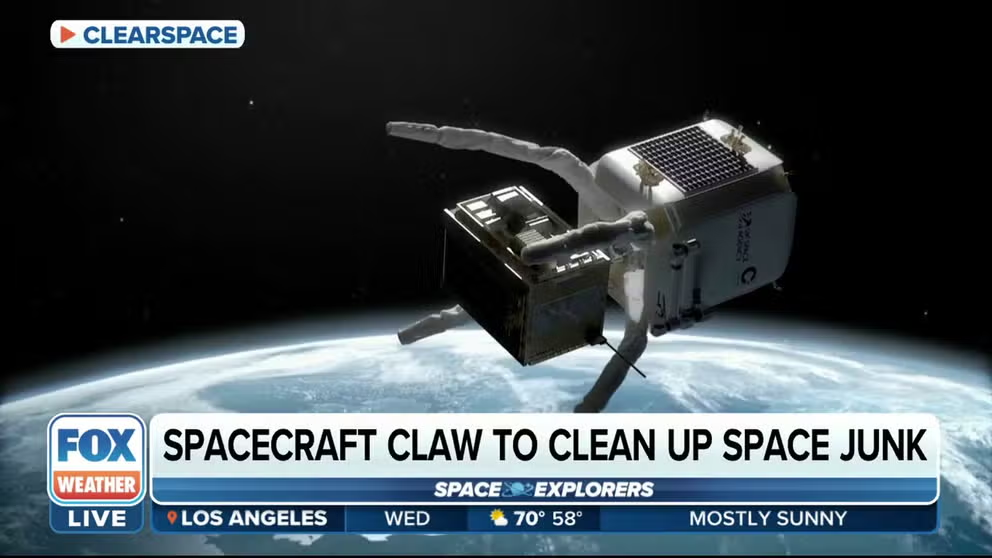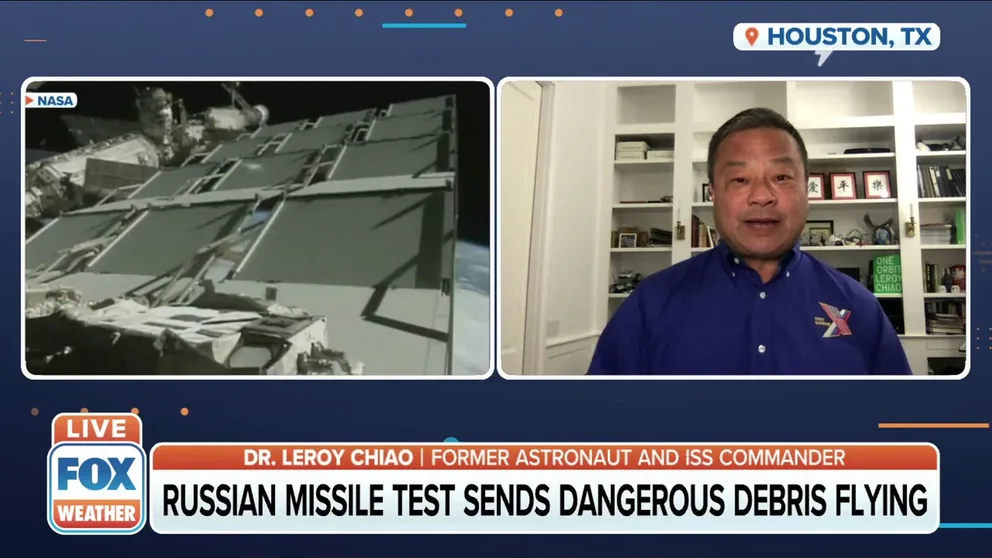Retired NASA satellite crashes into Earth off Alaska's coast
NASA's Earth Radiation Budget Satellite was used for Earth measurements until 2005. The Department of Defense confirmed the satellite reentered the atmosphere over the Bering Sea Sunday night, according to NASA.
The claw: Plucking space junk
Scientists designed a spacecraft claw to pluck space junk like broken satellites and jettisoned rockets from the solar system.
A NASA satellite that spent nearly four decades observing the globe’s ozone and measuring radiational energy crashed into Earth’s atmosphere over the weekend, bringing an end to a historic run.
The space agency reported the 5,400-pound Earth Radiation Budget Satellite was on track to start its reentry process Sunday around 6:40 p.m. EST. However, NASA said the satellite could deviate from the estimated time by several hours.
NASA and the Department of Defense confirmed Monday morning that the satellite reentered the atmosphere Sunday over the Bering Sea.
The space agency, Department of Defense, the U.S. Space Force and multiple organizations tracked the large space debris through reentry.
The U.S. Space Force Space Track data shows the satellite likely reentered Earth's atmosphere at 11:04 p.m. EST Sunday off the west coast of Alaska in the Bering Sea. The entry was about 2 minutes off from the final prediction issued by the Space Track ahead of reentry.
Space Track is operated by the Space Force's 18th Space Defense Squadron and manages the U.S. Space Surveillance Network, which is a collection of ground and space-based sensors to track human-made objects in Earth's orbit.

A rendering of NASA's Earth Radiation Budget Satellite.
(NASA)
Aerospace Corporation's Center for Orbital and Reentry Debris Studies predicted a reentry at 10:49 p.m. EST on Sunday, plus or minus 13 hours.
NEWEST WEATHER SATELLITE BECOMES GOES-WEST JUST IN TIME TO TRACK BOMB CYCLONE
Experts said due to the friction and heat associated with reentry, the majority of the satellite would burn up, but there was a possibility that some small components could survive the process and fall toward Earth’s surface.
The risk of coming into contact with any of the pieces was considered to be low, with only a 1-in-9,400 chance, according to NASA.
The satellite was launched decades prior to NASA's current collision avoidance policy that requires spacecraft orbital reentry to pose a 1-in-10,000 risk of collision upon reentry.
The retired ERBS was originally launched by Space Shuttle Challenger in 1984 from Florida, and its mission far exceeded expectations.
When launched, NASA initially hoped to use the high-tech machinery for a couple of years, but the satellite remained operational for over two decades.
During its run, the satellite helped change humans’ understanding of ozone and the important role it plays in protecting Earth from ultraviolet radiation.
"Data on the ozone layer provided by ERBS was key in the international community’s decision-making process during the Montreal Protocol Agreement, which has resulted in a near elimination of chlorofluorocarbons (CFCs) in industrialized countries," NASA stated.
Managing space junk
Former Astronaut On The Dangers Of Space Junk
Former Astronaut Dr. Leroy Chiao talks about the dangers of space junk.
With more nations launching rockets and satellites, the threat of debris reaching Earth’s surface appears to be becoming an increasing occurrence.
Space junk presents a significantly higher threat to human spaceflight and satellites than to life on Earth.
The International Space Station must navigate away from incoming space debris as the Department of Defense's Surveillance Network sensors continues to track more than 27,000 pieces of space junk larger than a softball orbiting Earth.
In 2022, the world watched as two Chinese rockets fell uncontrollably to Earth. The debris landed harmlessly over the vast oceans of the Southern Hemisphere, but space administrators said the events had the potential to be catastrophic if objects landed in large population centers.
The U.S. and other counties have criticized China for its lack of transparency and cooperation regarding its space program.
When Russia destroyed a defunct satellite in low-Earth orbit in November 2021, the anti-missile test created more than 1,500 pieces of debris and put the astronauts on the ISS at risk, according to NASA and the U.S. State Department.
Space Track is monitoring more than 45,000 human-made objects in space, according to U.S. Space Command.

